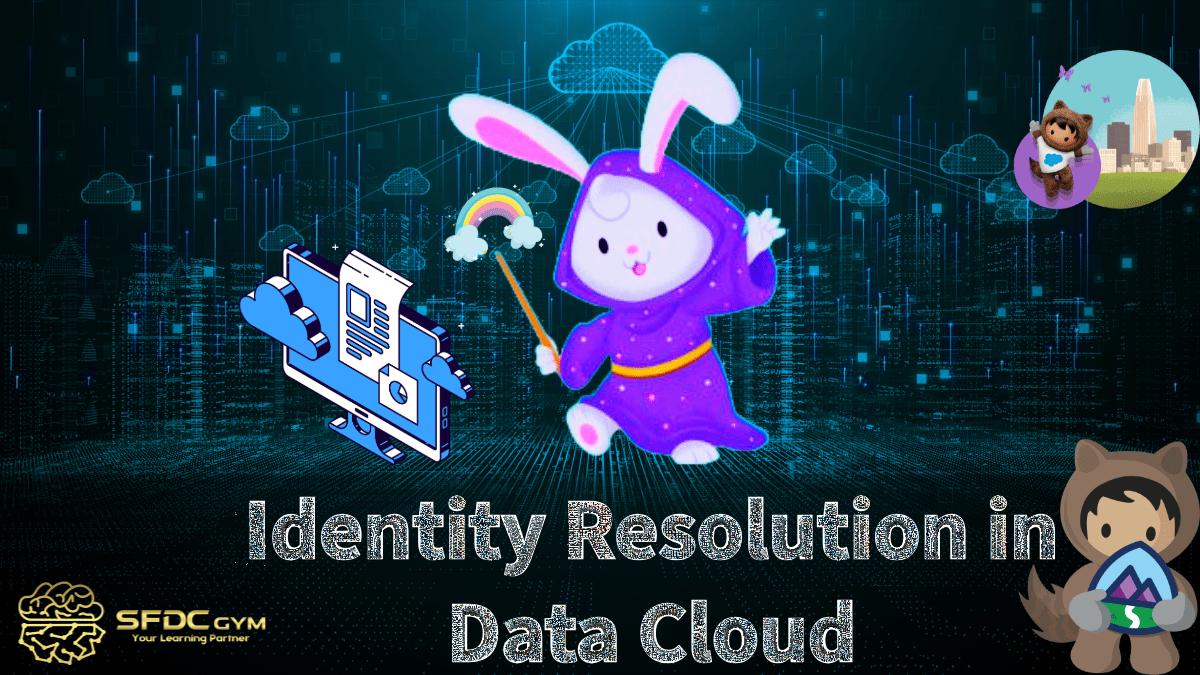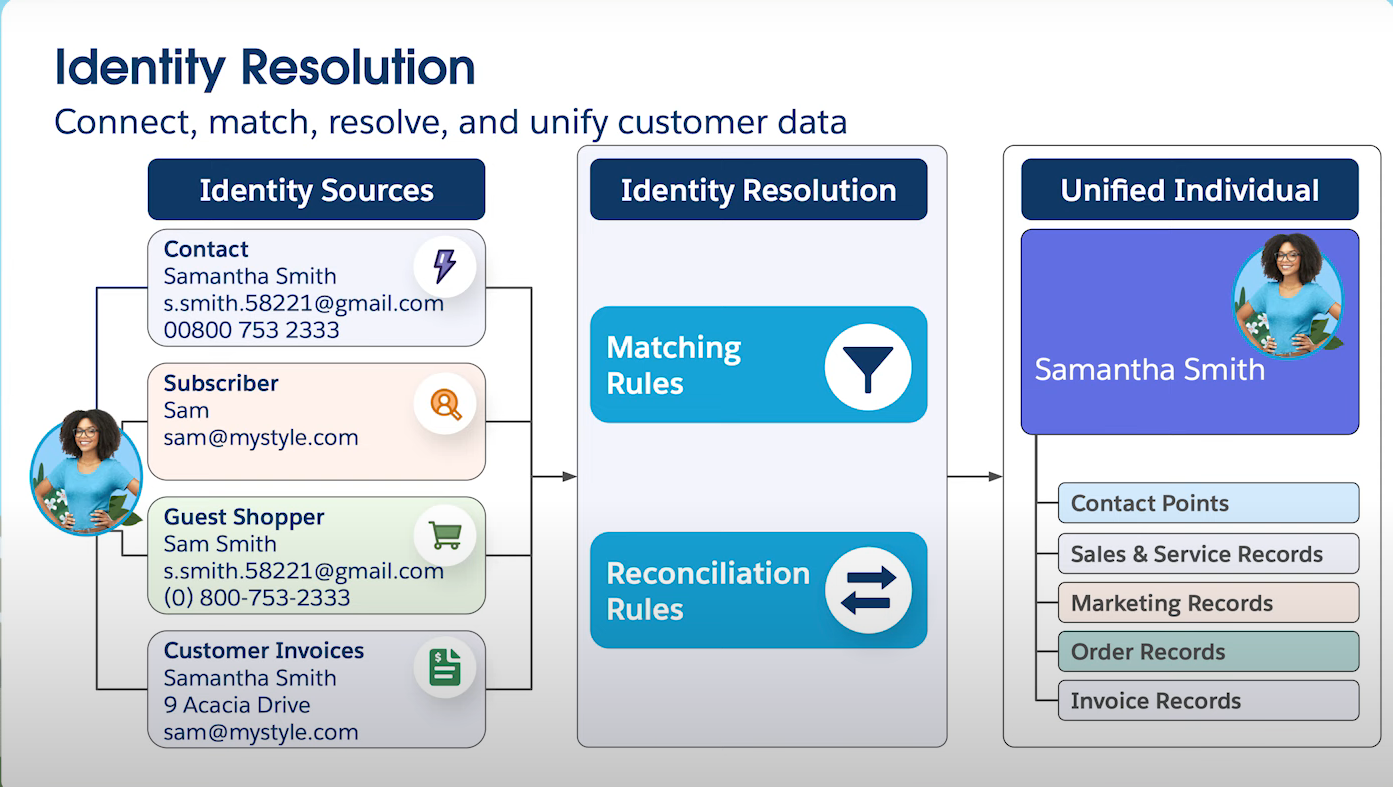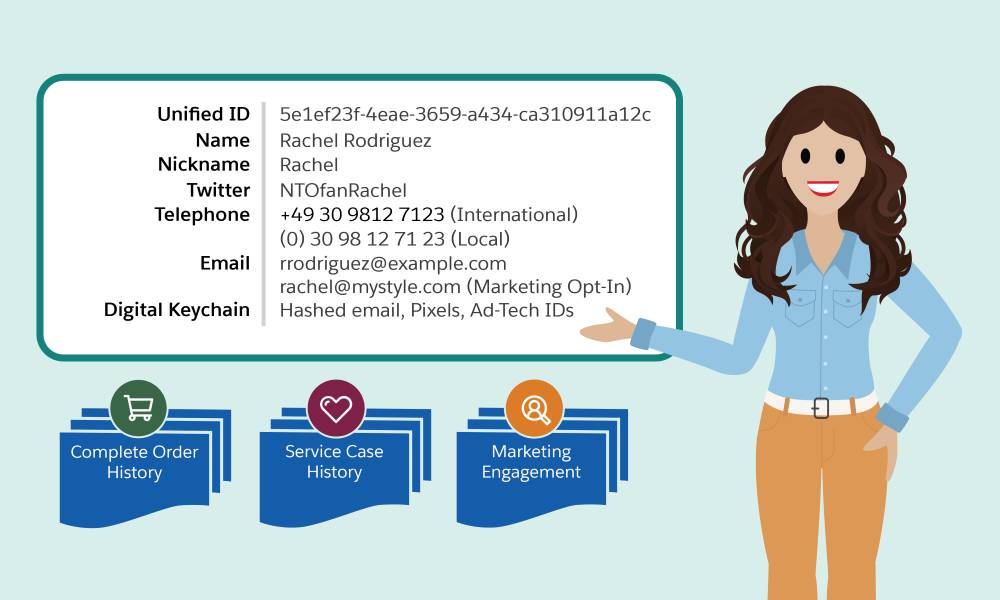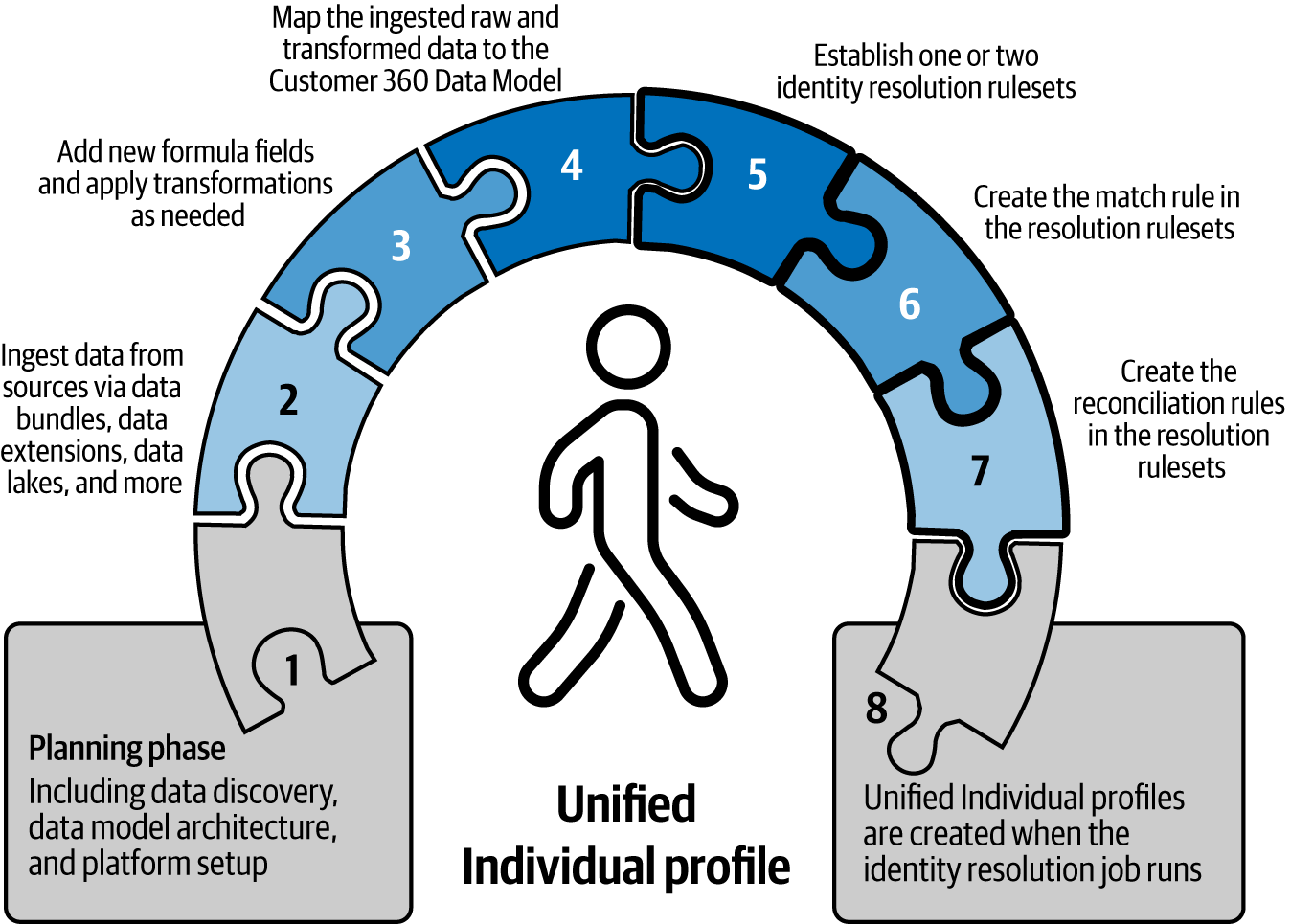Unlocking Identity Resolution and Unified Profiles



Mastering Identity Resolution and Unified Profiles in Salesforce Data Cloud
Understanding how to harness customer data effectively is paramount for businesses aiming to deliver personalized experiences and drive revenue. Salesforce Data Cloud revolutionizes this process with tools like Identity Resolution and Unified Profiles, transforming fragmented data into actionable insights.
This post explores the concepts of Identity Resolution and Unified Profiles, walks you through the implementation process, and explains other key terminologies like Golden Records and Consolidation Rate. Whether you’re a Data Cloud Engineer, Architect, or Data Specialist, this guide will help you maximize your use of Salesforce Data Cloud.
What is Identity Resolution?

At its core, Identity Resolution is a data process that matches and links disparate identifiers and datasets belonging to the same individual across multiple systems. Imagine a user who orders from an e-commerce website but creates multiple accounts using variations of their name or email (e.g., “Jane Doe” and “J. Doe”). Without Identity Resolution, these accounts appear as two different customers. Salesforce’s Identity Resolution eliminates duplicates by reconciling these identities into a single, unified customer profile.
Example of Identity Resolution in Action: Consider a clothing retailer who collects customer data through website registrations, mobile app interactions, and in-store POS systems. John Doe may use the mobile app with the email "john.doe@example.com," buy in-store using a loyalty card registered as "J.Doe," and register complaints via email as "Johnathan Doe." Identity Resolution parses these data sources, linking all activities back to John as one individual.
Why Do We Need Identity Resolution?
Identity Resolution solves critical pain points caused by fragmented data, helping organizations achieve efficiency and personalization by addressing these problems:
- Customer Experience: Unified data enables personalized marketing and service interactions.
- Data Duplication: Combines redundant records into a single profile, saving database storage and reducing operational inefficiencies.
- Compliance: Ensures data accuracy, which is crucial for regulatory compliance such as GDPR or CCPA.
Without Identity Resolution, organizations encounter data silos, misaligned customer insights, and missed opportunities for optimization.
What is a Unified Profile?

Unified Profiles go hand-in-hand with Identity Resolution. A Unified Profile is a single, comprehensive customer record that consolidates data from multiple systems into a central identity. This profile includes transactional details, preferences, interactions, and demographic information, giving businesses a 360-degree view of their customer.
Unlike traditional datasets stored in silos, Salesforce Data Cloud’s Unified Profiles bring all this information together, making it accessible for analytics, segmentation, and decision-making.
Implementation Process for Identity Resolution in Salesforce Data Cloud
Creating Identity Resolution in Salesforce Data Cloud requires systematic steps to ensure accuracy and completeness. Here’s a breakdown of the process:

1. Planning Phase: Start by conducting data discovery to identify all possible sources of customer identifiers (e.g., CRM, data lakes, e-commerce databases). Document their structures, data overlaps, and discrepancies that the resolution process will need to address.
2. Data Ingestion: Bring data into Salesforce Data Cloud from sources like data lakes, CRM systems, or data bundles. Use data ingestion tools to centralize all datasets within the platform.
3. Data Transformation: Prepare the ingested data by cleaning, normalizing, and creating new formula fields if necessary. This step ensures all entries align with uniform formatting for easier mapping later.
4. Mapping Data: Map incoming fields from ingested datasets to the standard fields within Salesforce Data Cloud. For instance, map varied customer ID formats to a standard field.
5. Setting Up Identity Resolution Rulesets: Define rulesets for Identity Resolution. These are preconfigured instructions defining how datasets will be matched.
6. Creating Matching Rules: Matching rules identify customer data resembling the same person. For instance, match based on first name, last name, and phone number, or alternatively, based on email address alone.
7. Creating Reconciliation Rules: Reconciliation rules unify matched datasets into a single profile. Specify how conflicts are resolved when datasets contain varying information (e.g., which email address should be preferred).
8. Generating Unified Individual Profiles: Once the identity resolution job runs, Unified Individual Profiles are created. You now have a central 360-degree representation of each customer ready for use.
What Are Golden Records?
A Golden Record is like a “best version” of a Unified Profile—it’s the most accurate and reliable representation of a customer compiled from multiple data sources. While Unified Profiles consolidate data from all sources for completeness, Golden Records prioritize higher-quality sources to ensure that the profile is error-free and ready for operational use.
Example:Imagine a customer’s address is available from both an e-commerce system and a delivery system. The address captured directly during an in-store transaction is likely more reliable than one saved during an online transaction, as human input errors commonly occur on e-commerce sites. The Golden Record will prioritize the in-store address.
What is Consolidation Rate?
Consolidation Rate measures how efficiently data profiles were merged into unified or golden profiles after Identity Resolution. It’s often presented as a percentage.
Example of Consolidation Rate
An organization stores 20,000 records representing customer interactions. Identity Resolution consolidates these into 15,000 Unified Profiles. This results in a 25% Consolidation Rate, meaning 25% of redundant or erroneous records were eliminated.
How to Calculate Consolidation Rate
The formula to calculate the Consolidation Rate is as follows:
Consolidation Rate (%) = (1 - (Number of Unified Profiles ÷ Total Number of Records)) × 100
For example, if an organization has 20,000 total records and Identity Resolution reduces these to 15,000 Unified Profiles, the calculation would be:
Consolidation Rate (%) = (1- (15,000 ÷ 20,000) )× 100 = 25%
This simple formula helps quantify the effectiveness of the Identity Resolution process in merging redundant records.
Key Terminologies in Identity Resolution
Anonymous Profile: Represents interactions where only partial identifiers (e.g., a cookie ID or IP address) are available. These profiles are often linked to verified Unified Profiles once more specific identifiers (like an email) emerge.
Example: A customer browses a website without logging in but later makes a purchase using their email, connecting the anonymous browsing data to their verified Unified Profile.
Overgrouping: Occurs when Identity Resolution erroneously combines records from multiple individuals into a single profile.
Example: Two different customers (“John Doe” and “Jane Doe”), who share the same phone number but have completely different transactional data, might be mistakenly grouped into one profile.
Balancing rules to avoid overgrouping without under-identifying customers is a key challenge in Identity Resolution.


